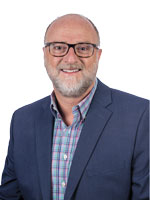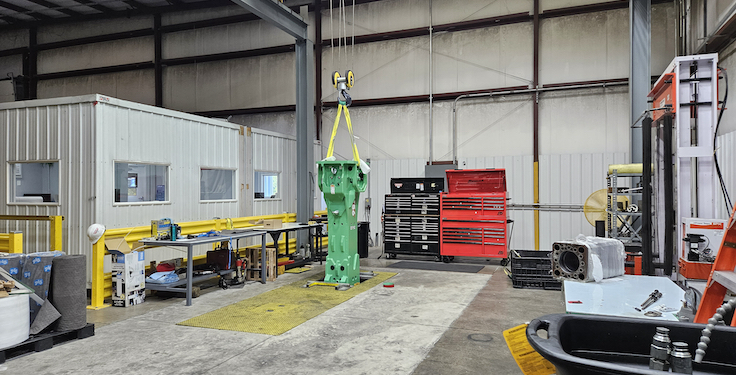
Montabert’s recent move differs slightly from the ongoing trend seen among some manufacturers. Rather than expanding a facility, it is instead capitalizing on space it already has within its distribution facility.
Additionally, Montabert doesn’t have original manufacturing capabilities it can expand upon in the U.S., as the company’s manufacturing is done at its world headquarters in France.
Instead, Montabert’s focus is on remanufacturing and repairing Montabert equipment in the same spot from which it already stores and ships parts and equipment. There are fundamental differences between the two processes, though.
“A repair is [when someone has] a breaker down or a drifter down and it just needs a quick repair,” Scarfia says. “Reman is when we go out and scout for the cores (the functioning mechanism of the breaker that slides inside the cradle). We bring the cores in, put genuine factory parts in them and sell them as a remanufactured product at a discount.”
With ongoing issues such as steel pricing and the war in Ukraine causing delays in getting equipment from Europe, the move gives Montabert more product control stateside.
“We are seeing high demand on the reman side,” Scarfia says. “Because of manufacturing restrictions we have … we’re not immune to supply chain issues manufacturing in Europe by any means. While we have seen some recent improvements in supply chain issues, the situation is still not ideal. What we have done is take control of that in the U.S. market ourselves.”
Looking ahead
Garrison anticipates increased equipment demand to continue throughout the next several years.
“Historically, you get six, eight months of big demand and everybody needing stuff,” he says. “We’re going into our second and third year of record levels of demand and equipment. I think there’s a feeling across the industry now that this is going to stick around for a while. It’s not a one-year boom. This is going to be a three- to five-year boom.”
Woodie expects capex spending to be impacted by rising interest rates and recession fears. Despite that, he expects the next few years to be good ones.
“I think the major producers are cautiously optimistic,” he says. “There was huge optimism last year after we thought COVID was through. This year, because we’re hearing about the cost of money and interest going up, the monetary side of it may limit the kind of growth we saw last year. I think in the next two or three years, we’re still going to see growth, but not as rapid as we’ve seen in the past few years.”
Editor-in-chief Kevin Yanik contributed to this article.











